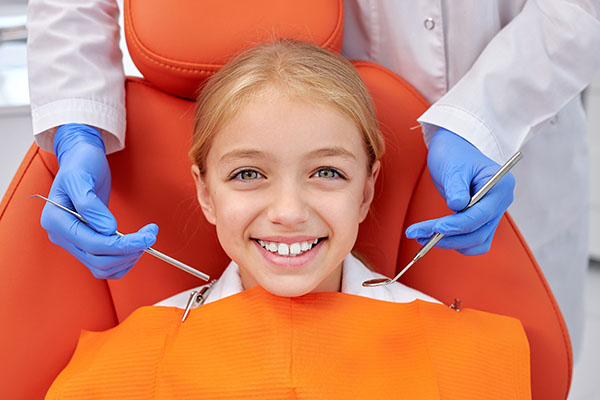Common Issues Treated by a Pediatric Orthodontics Specialist

A pediatric orthodontic specialist can help your child with many orthodontic issues. For example, poorly aligned teeth can cause difficulty chewing and speech impairments. In addition, it can lead to an increased risk of teeth grinding and tooth decay. If your child has signs and symptoms of orthodontic problems, early intervention by an experienced pediatric orthodontist can help preserve the health and beauty of their smile. Continue reading to learn more about common pediatric orthodontic issues.
Symptoms of pediatric orthodontic issues
Difficulty chewing or biting
A child's struggle with chewing or biting could be due to misaligned teeth or jaw. This can lead to a higher risk of choking.
Grinding of the teeth
If a child is grinding their teeth, it could be a sign of misalignment. If left untreated, it can permanently damage their developing teeth. In addition, it can also shift their jaw and teeth alignment.
Jaw shifting or clicking
Parents may notice that their child's jaw shifts or clicks. It may do this because of an improper alignment. It could also signify the child having Temporomandibular Joint Disorder (TMJ) when the muscles or ligaments around their jaw joints are inflamed or irritated.
Mouth breathing
When a child consistently breathes their mouth, it can affect the appearance of their face and teeth. This is due to their tongue does not fully rest on their mouth's roof. As a result, it can lengthen their face and cause a narrower jaw.
Common pediatric orthodontic issues
Crooked or crowded teeth
Healthy teeth and gums are essential to a child's oral health. However, if they have crooked or crowded teeth, it can make it harder for them to brush and floss. This can lead to an increased probability of tooth decay and gum disease.
Early or late loss of baby teeth
Children typically start losing their baby teeth between ages six and 15. This timeline can help with their proper speech and facial development. In addition, primary teeth hold the proper space for their permanent teeth, which help guide them to the proper position. When children lose their teeth too early, they could suffer from numerous orthodontic complications, such as:
- Speech development
- Facial development
- Difficulty chewing
- Misaligned teeth or crowding
- Impacted teeth
In contrast, some children can be late bloomers and lose their teeth longer than normal. This situation has an equal amount of developmental and orthodontic issues, such as permanent teeth erupting behind the baby teeth and overcrowding the mouth.
Gapped teeth
Many children have gaps in their teeth. They can occur due to genetics, missing teeth, dental trauma, or poor oral habits, such as thumb sucking or prolonged pacifier use. A gap in a child's teeth may not harm their overall dental health but may harm their self-esteem and inner confidence.
Malocclusion
A malocclusion is where a child's teeth are misaligned. This condition can lead to oral health complications if it is left untreated. Types of malocclusions include:
- Crossbite: This type of malocclusion is where upper teeth fit inside of the lower teeth. It can affect a single tooth or an entire group of teeth, including the front or back teeth.
- Openbite: With an open bite, a child's upper and lower rows of front teeth do not touch or close when they smile or chew. They can be caused by thumb sucking and grow into a rounded formation.
- Overbite: An overbite is characterized by too much overlap between the upper and lower front teeth. This can cause a collapsed lip line, making the chin and nose appear larger.
- Underbite: This condition occurs when the bottom teeth stick out in front of the upper teeth.
Types of pediatric orthodontic treatment
Parents need to seek orthodontic treatment for their children. It is easier for pediatric orthodontic specialists to treat issues while a child's jaw develops. Their bone structure is not as rigid as a fully-developed adult jaw and will require fewer future treatments. Some of these treatment methods include:
- Aligners: Clear plastic aligners are a common alternative to regular braces and can help straighten out crooked teeth while being virtually invisible.
- Braces: These are the most common type of fixed orthodontic appliances. They consist of wires, bands, and brackets to straighten crooked teeth or misaligned jaws.
- Palatal expanders: These devices help widen the arch of the upper jaw.
- Space maintainers: Space maintainers can be fixed or removable. They help adult teeth grow into place and maintain the right amount of space for them.
In conclusion
A pediatric orthodontics specialist can help protect your child's developing smile and ensure that their teeth and jaw are healthy and functional. In addition, these specialized services can also help boost their self-confidence. Call our office to learn more or to schedule an appointment.
To learn more about our pediatric orthodontic services, visit https://www.hvkidsmiles.com or call (845) 363-4177 to schedule an appointment.
Check out what others are saying about our dental services on Yelp: Orthodontics for Children in Middletown, NY.
Recent Posts
If your child has cavities, consider composite fillings. Compared to traditional fillings, the newer composite variety offers some significant benefits.Composite restorations consist of synthetic resin, a plastic material mixed with tiny particles of quartz or glass. The result is a solid, tooth-colored paste that becomes hard and sturdy when it dries. Because it consists of…
Dental fillings can consist of composite (tooth-colored), porcelain, metal, and more. Pediatric dentists use traditional and tooth-colored fillings to close small holes in the teeth, commonly caused by cavities (extremely common in children). The dentist will extract decayed tissues and replace them with one of these filling materials. Dental fillings usually last many years before…
Tooth-colored fillings can restore the functionality of a child’s teeth while creating an aesthetically pleasing smile that leaves them happy with the dental work received. Composite fillings, in particular, are becoming increasingly common. Therefore, it is important for patients to know whether the option may be right for them.Composite resin fillings are the technical name…
Pediatric dentists often use tooth-colored composite fillings to repair cavities and damaged teeth. The combination of plastic resin and glass particles can last for years with proper care. They are a great option for those who want a natural-looking dental restoration for their children. This article will cover the process of recommending composite fillings for…


